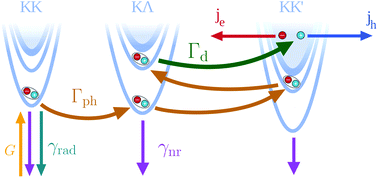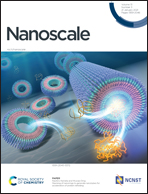Phonon-assisted exciton dissociation in transition metal dichalcogenides†
Abstract
Monolayers of transition metal dichalcogenides (TMDs) have been established in the last years as promising materials for novel optoelectronic devices. However, the performance of such devices is often limited by the dissociation of tightly bound excitons into free electrons and holes. While previous studies have investigated tunneling at large electric fields, we focus in this work on phonon-assisted exciton dissociation that is expected to be the dominant mechanism at small fields. We present a microscopic model based on the density matrix formalism providing access to time- and momentum-resolved exciton dynamics including phonon-assisted dissociation. We track the pathway of excitons from optical excitation via thermalization to dissociation, identifying the main transitions and dissociation channels. Furthermore, we find intrinsic limits for the quantum efficiency and response time of a TMD-based photodetector and investigate their tunability with externally accessible knobs, such as excitation energy, substrate screening, temperature and strain. Our work provides microscopic insights in fundamental mechanisms behind exciton dissociation and can serve as a guide for the optimization of TMD-based optoelectronic devices.



 Please wait while we load your content...
Please wait while we load your content...